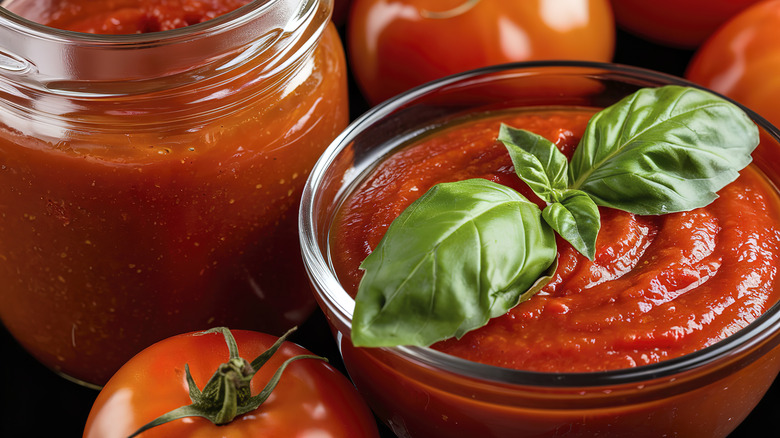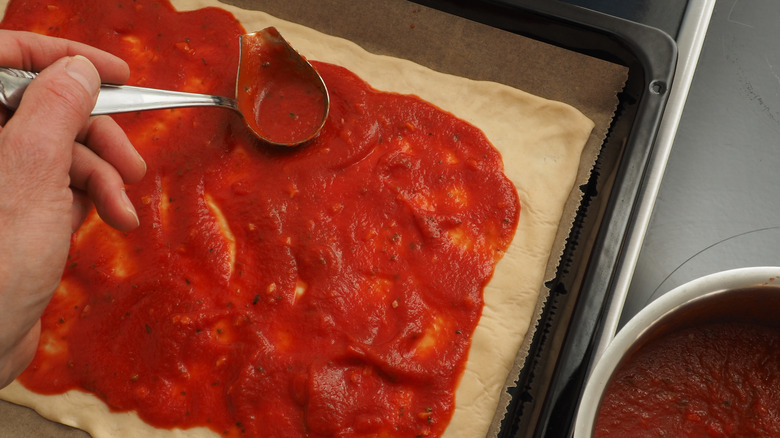The Italian Staple Your Pantry Needs For Quick And Easy Pasta Nights
Store-bought pasta sauce is cheap and easy to use, making it an ideal option on nights when you're feeling rushed. But in reality, there's a huge quality difference between homemade and store-bought sauces, and the former tastes far superior. If you want to elevate your pasta dishes with just a simple tomato-based sauce, you need to learn how to make passata. To find out more about this classic recipe, The Takeout spoke to Marino Cardelli, founder of Experience BellaVita, a tour company in Abruzzo, Italy. The company often includes traditional cooking experiences led by Cardelli's grandmother, Amina Ferretti, who at almost 90 continues tending to her garden and cooking fresh dishes.
"Nonna Amina describes passata as a skinless and seedless fresh tomato purée with a dense, silky consistency," Cardelli states. Passata is made by cutting tomatoes in half and letting them simmer in a sauce pan until they're soft and mushy. After about 20 minutes, you can use a food mill or a strainer to separate the flesh and juices from the skin and seeds. That's all there is to it — and the freshness of the tomatoes is simply unmatched.
Cardelli explains, "[Nonna Amina] has never tried American passata or supermarket brands, but she notices in restaurants or pizzas made with commercial passata that the flavor is more acidic." Though you can use ingredients like carrots to fix this acidity, homemade passata typically doesn't have this issue at all.
Dishes to make with passata
Because of its simplicity, passata is versatile, and goes well with meatballs, pasta, ravioli, and even salty fish. Marino Cardelli says an unexpected passata dish that his grandmother loves is ravioli dolci. "[It's] sweet ricotta, cinnamon, lemon zest, sugar, and marjoram served with a meat-based tomato sauce. It's a Carnival tradition that balances sweet and savory beautifully," he describes.
As for adding a bit of flavor to the passata, Cardelli states, "[Nonna Amina's] go-to is a simple sofrito [a sautéed blend of vegetables, herbs, and spices]of celery, carrot, and onion sautéed in our homemade extra virgin olive oil. Once lightly browned, she adds the passata fresh or preserved to simmer into a rich sauce." This quick extra step will give more depth to your homemade passata. Another pro tip: Use San Marzano tomatoes to make the sauce.
Though Nonna Amina always prefers to use fresh passata, it's common for Italians, including Cardelli's family, to preserve it. If making fresh passata every single time is a daunting idea, make large batches and set some aside for later use. Passata lasts around seven days in the fridge, or about six months if it's stored in an airtight container and frozen.

